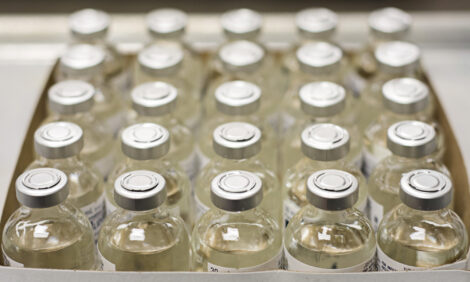



Why Did Turkeys Grow so Big?
US - Selective breeding over the years has brought about today's big-breasted turkeys, explain poultry experts in a popular article in the run-up to the Thanksgiving holiday.Francine Bradley, extension poultry specialist in the Animal Science Department at University of California Davis, has seen pictures of turkeys from the early 20th century. "They look small and scrawny even compared to chickens today, let alone turkeys," she said to Los Angeles Times.
Those diminutive birds were Bronze turkeys, the most popular ones of their time. But they grew bigger and increasingly top-heavy through selective breeding that kept pairing up the biggest, top-heaviest birds.
Broad Breasted Bronzes were very attractive as they strutted around on the farm – or posed for their portraits for Thanksgiving cards – but lying in the meat case, they were not so good. That was because of their pinfeathers, Dr Bradley says.
Pinfeathers are tiny, undeveloped feathers, often just barely poking through the skin. Turkeys have tons of them – it is impossible to remove them all. They are harmless, says Daniel Fletcher, head of the Animal Science Department at the University of Connecticut, but "they looked like blackheads." Customers found them unappetizing.
They complained. Breeders listened. And in the 1960s, one of them had an idea. Once in a blue moon, bronze-colored parents have an all-white baby turkey. Such a mutation is called a 'sport'. The breeder started pairing up all-white sports and eventually developed a line of all-white turkeys.
They still had pinfeathers, but they were white so they did not stand out against the turkeys' pale skin the way dark-bronze pinfeathers did.
Through their buying patterns, consumers are still telling the breeders what they want, says Murray Bakst, a research physiologist for the Agricultural Research Service in Beltsville, Maryland, although it takes about five years to breed a line that will meet consumer needs.
One thing consumers always want, of course, is low prices, and breeders are working to keep prices down (and turkey growers' profits up) by minimizing the feed conversion rate, a measure of how much feed it takes to raise a turkey. According to the Washington, D.C.- based National Turkey Federation, it takes about 75 to 80 pounds to raise a 30-pound tom turkey, which works out to a feed conversion rate of about 2.5 (the ratio of feed weight to turkey weight).
Fast-growing turkeys have low feed-conversion rates, and being sick slows down growth. So the health of the birds is always a prime consideration for breeders, too.
Most turkey breeding is now done by just two so-called primary breeders: Aviagen Turkeys in Lewisburg, West Virgina, and Hybrid Turkeys in Kitchener, Canada. The reproduction itself is done by artificial insemination.
Successfully breeding broad-breasted birds with lots of extra-nutritious white meat may have been a boon to consumers but it did no favours for the turkeys. Their new physiques make natural reproduction impossible. Mature toms, which weigh upwards of 40 pounds, have such large breasts that they are unable to mount the hens. In fact, their legs are often too weak to bear up under their massive front-loading.
Insemination is mainly an issue for the primary breeders. Turkey growers generally buy their stock from these companies – either as hatching eggs or as day-old poults, the proper term for baby turkeys, not 'chicks', concludes the Los Angeles Times article.








